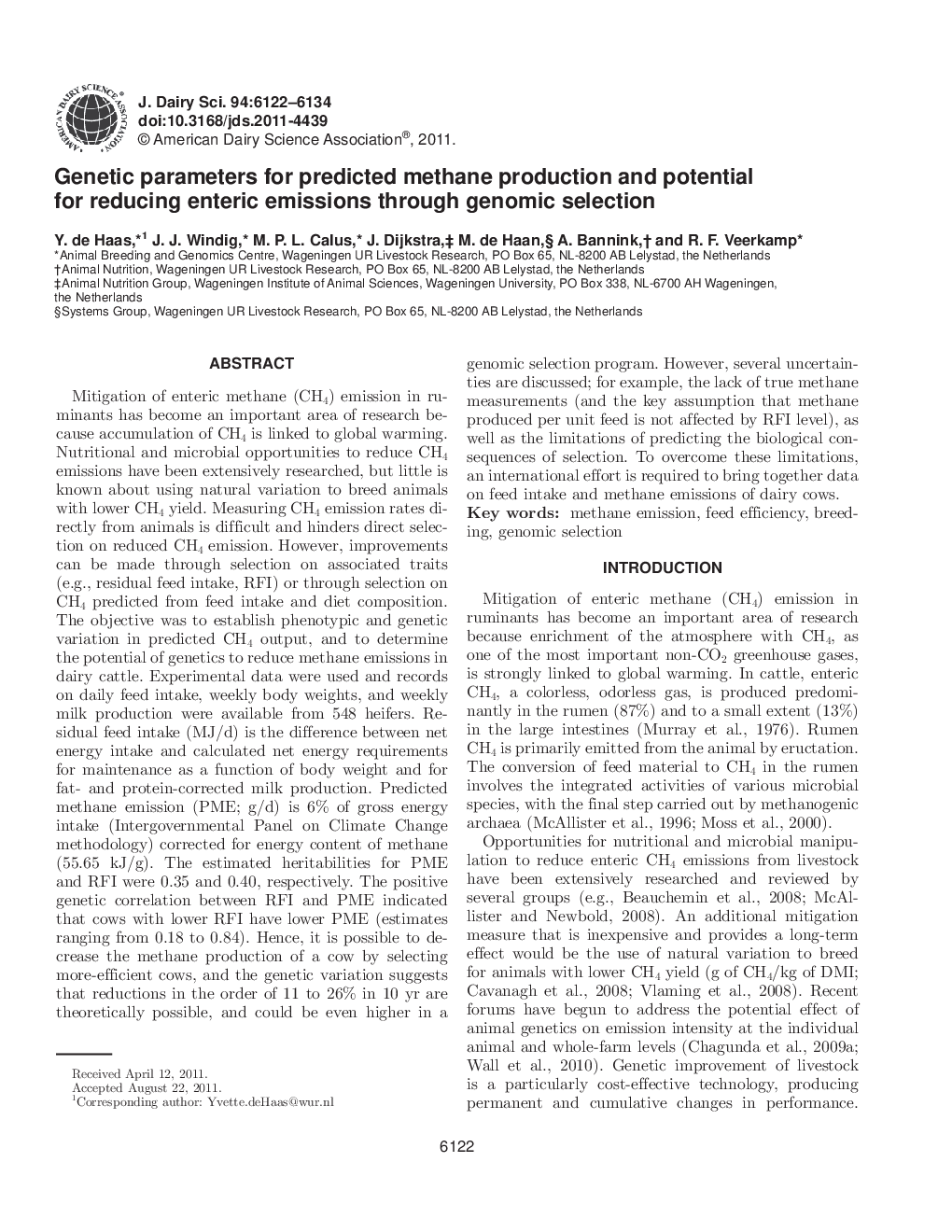| کد مقاله | کد نشریه | سال انتشار | مقاله انگلیسی | نسخه تمام متن |
|---|---|---|---|---|
| 10981719 | 1108078 | 2011 | 13 صفحه PDF | دانلود رایگان |
عنوان انگلیسی مقاله ISI
Genetic parameters for predicted methane production and potential for reducing enteric emissions through genomic selection
دانلود مقاله + سفارش ترجمه
دانلود مقاله ISI انگلیسی
رایگان برای ایرانیان
کلمات کلیدی
موضوعات مرتبط
علوم زیستی و بیوفناوری
علوم کشاورزی و بیولوژیک
علوم دامی و جانورشناسی
پیش نمایش صفحه اول مقاله

چکیده انگلیسی
Mitigation of enteric methane (CH4) emission in ruminants has become an important area of research because accumulation of CH4 is linked to global warming. Nutritional and microbial opportunities to reduce CH4 emissions have been extensively researched, but little is known about using natural variation to breed animals with lower CH4 yield. Measuring CH4 emission rates directly from animals is difficult and hinders direct selection on reduced CH4 emission. However, improvements can be made through selection on associated traits (e.g., residual feed intake, RFI) or through selection on CH4 predicted from feed intake and diet composition. The objective was to establish phenotypic and genetic variation in predicted CH4 output, and to determine the potential of genetics to reduce methane emissions in dairy cattle. Experimental data were used and records on daily feed intake, weekly body weights, and weekly milk production were available from 548 heifers. Residual feed intake (MJ/d) is the difference between net energy intake and calculated net energy requirements for maintenance as a function of body weight and for fat- and protein-corrected milk production. Predicted methane emission (PME; g/d) is 6% of gross energy intake (Intergovernmental Panel on Climate Change methodology) corrected for energy content of methane (55.65Â kJ/g). The estimated heritabilities for PME and RFI were 0.35 and 0.40, respectively. The positive genetic correlation between RFI and PME indicated that cows with lower RFI have lower PME (estimates ranging from 0.18 to 0.84). Hence, it is possible to decrease the methane production of a cow by selecting more-efficient cows, and the genetic variation suggests that reductions in the order of 11 to 26% in 10 yr are theoretically possible, and could be even higher in a genomic selection program. However, several uncertainties are discussed; for example, the lack of true methane measurements (and the key assumption that methane produced per unit feed is not affected by RFI level), as well as the limitations of predicting the biological consequences of selection. To overcome these limitations, an international effort is required to bring together data on feed intake and methane emissions of dairy cows.
ناشر
Database: Elsevier - ScienceDirect (ساینس دایرکت)
Journal: Journal of Dairy Science - Volume 94, Issue 12, December 2011, Pages 6122-6134
Journal: Journal of Dairy Science - Volume 94, Issue 12, December 2011, Pages 6122-6134
نویسندگان
Y. de Haas, J.J. Windig, M.P.L. Calus, J. Dijkstra, M. de Haan, A. Bannink, R.F. Veerkamp,